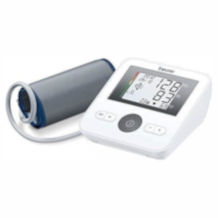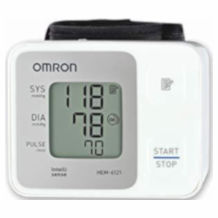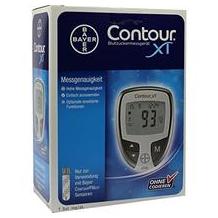Medical thermometer purchasing advice: how to choose the right product
- What you need to know
- Doctors recommend that a medical thermometer should be part of every medicine cabinet.
- A thermometer must be accurate and easy to use.
- Before buying a thermometer, you should consider the age group for which the thermometer will mainly be used.
- Contactless infrared thermometers have some advantages over the older, analogue models.
- Contact thermometers are precise, but are less practical to use due to the long measurement times.
Health first
Health is the most important thing in life. If you feel ill and listless, you should not just ignore the symptoms, especially during the flu season. If you have a hot head and also pain in your limbs, it is advisable to immediately reach for the thermometer to measure your body temperature.
A fever, i.e. an elevated temperature, is an indication that someone is ill. Ultimately, it is a doctor who diagnoses what illness the patient is suffering from. But before you decide to go to the doctor’s office or call a doctor, taking your temperature is helpful to have the right information at hand. A report on the course of the fever over time helps the doctor make their diagnosis.
The normal human body temperature is around 37°C. It can fluctuate between 36.5 and 37.4°C. It is important to note that the body temperatures of adults and children are slightly different. In adults, doctors consider it a fever when the patient has a body temperature of at least 38.2°C. An elevated temperature is 37.5°C. In babies under three months of age, one speaks of fever when the temperature is 38°C. For toddlers, this is where the elevated temperature begins. 41°C means red alert for any age; this temperature is life-threatening.
What types are there?
There are many different types of thermometers on the market. These include digital, contactless, and glass or analogue products. The latter are now rarely used. Regardless of whether you decide on an analogue or a modern digital thermometer, it is always advisable to read the instructions before you use it. This is the only way to ensure correct use. The best-known manufacturers of medical thermometers include Braun, HYLOGY, Beurer, Weyty, Adoric, Lovia, Domotherm, reer, SVMUU, and MyBeo.
Caution, risk of breakage!
Analogue thermometers made of glass are not recommended due to their high fragility. In the past, they used to contain mercury, a substance that is toxic to humans if direct contact is made; however, the manufacture of these products has been banned in the EU since 2009. Regardless, they still exist in many households and should be handled with caution.
Contact thermometers for the highest accuracy
Classic medical thermometers are analogue and require direct body contact. They measure very accurately and reliably. The tips of such contact thermometers are filled with a liquid that expands into a thin tube when heated, and thus indicates the temperature with the help of a scale. In the past, mercury was used as the aforementioned liquid. However, since the thermometers were made of fragile glass, the toxic contents were often released after breakage. That is why mercury thermometers are no longer sold in the EU today. However, modern analogue thermometers are still made of glass, so there is still a risk of cuts if the thermometer breaks.
Digital thermometers have almost completely replaced glass products. They measure just as precisely and reliably. In addition, they don’t break as easily. The temperature is measured by an electrical sensor. It consists of a metal whose electrical resistance changes depending on its temperature. The electronics inside convert the changes in resistance into temperature values that can be easily read on a small LC display. Like analogue thermometers, digital ones are very inexpensive to buy.
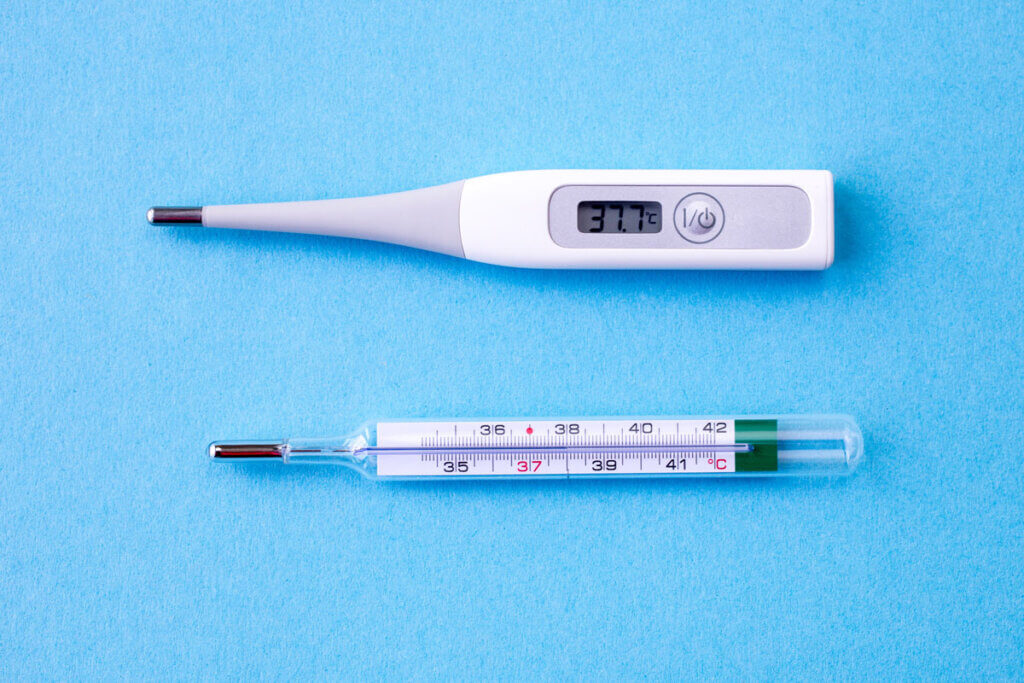
Infrared thermometers for toddlers and babies
Ear thermometers work via infrared radiation and measure temperature very quickly. They use a sensor to measure directly on the eardrum; the temperature there is similar to the temperature inside the body. This process is more pleasant than, say, with contact thermometers and uncomplicated for babies and toddlers, because it only takes a few seconds. However, the measurement is somewhat less accurate than with contact thermometers. In addition, parents need some practice at first because they have to position the ear thermometer correctly so that no measuring errors occur.
Ear thermometers are less suitable for very young babies because their ear canal is still too small. The ear thermometers should be used from the third month of life at the earliest. Caution is also advised in the case of an ear infection, as the ear may be swollen from the inside. In terms of price, ear thermometers tend to be in the upper segment.
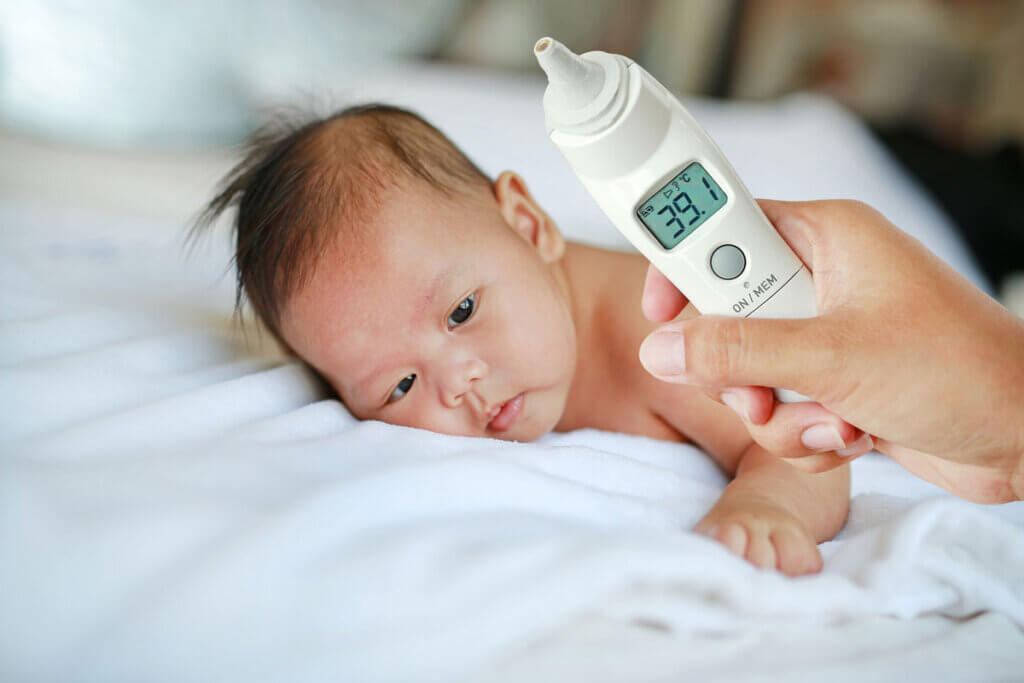
Are forehead thermometers recommendable?
Forehead thermometers also work via infrared radiation. In other words, they measure the heat that the body radiates. There are forehead thermometers that are placed directly on the forehead. Other products are simply held over the forehead without touching the skin. However, this measurement can also be influenced by the environment. This is why doctors hardly ever use these thermometers — the values are too imprecise and can fluctuate. Even though the application is easier compared to the use of ear thermometers, you should keep the possible inaccuracies in mind. For a quick measurement, such a thermometer can be helpful to get an approximate value. Forehead thermometers are rather expensive to buy. There are also combined thermometers on the market that offer the possibility of measuring both in the ear and on the forehead.

Pacifier thermometers for babies
There are relatively inexpensive pacifier thermometers specifically for babies and toddlers. Manufacturers such as reer or Elemed promise easy measurement, but, even with these thermometers, it is difficult to get an accurate result. According to the manufacturer, the pacifiers that have the thermometer built in must remain in the closed mouth for one minute to take the measurement. In practice, this is difficult, especially with restless babies. That’s why digital thermometers or infrared devices are more suitable, even for babies.
What to look for when buying
There are some factors that buyers should pay special attention to when choosing a medical thermometer. Two factors in particular are decisive for the right choice: precision and measuring time. However, functions such as signal tones, a display, a storage of the measurements, and other extras can also be useful. For example, some thermometers can connect to the smartphone via Bluetooth. Others switch off automatically, have an alarm function, or show fever limits that can be set depending on the age.
Precision
What good is a medical thermometer that consumers cannot rely on? After all, health is at stake. Medical professionals rely on precise information and accurate measurements. How precise a thermometer is, depends on the design and technology used. The classic contact thermometers are particularly reliable in this respect. But ear thermometers with infrared radiation also provide accurate results without deviations when used correctly.
Measuring time
Firstly, the duration of the measurement is decisive for a patient — no one likes to wait long, especially when sick. Secondly, the duration affects the accuracy of the result. The longer the thermometer has to be held to the respective spot, the higher the probability that inaccuracies will occur. Especially with babies and toddlers, a quick measurement is paramount. Holding still for a long time while taking a temperature usually does not work for them.
The classic contact thermometers need a relatively long time to take a reading. With the exception of analogue thermometers, all versions allow a measurement in less than 30 seconds. Some infrared clinical thermometers even promise a measurement in just one second. The measuring time of digital contact thermometers is about ten seconds. By contrast, analogue thermometers require approximately 60 seconds in the mouth or 3 minutes in the armpit. However, products with a shorter measuring time tend to be more expensive.
Signal tones
If you want to know when the temperature measurement is finished, you should opt for a signal tone function. Ear thermometers usually have a signal tone that sounds after one second, indicating that the measurement is finished. The value can then be read off the display. Some digital thermometers also have an acoustic alarm signal that sounds when patients have a fever. Digital thermometers sometimes have a silent mode that allows you to turn off the sound, in case you want to avoid disturbing others. This is very helpful if parents want to take a reading while their child is sleeping.
Display
Size, readability, and illumination — a thermometer display should be easy to read from. An illuminated display is very useful when taking measurements at night. There are thermometers whose display turns red if the measurement shows that the person has a fever. If the body temperature is healthy, it lights up green. If you cannot see well at short distances, you can look for a product that has an extra-large display. Infrared medical thermometers often have a large display, as well as an ergonomic design.
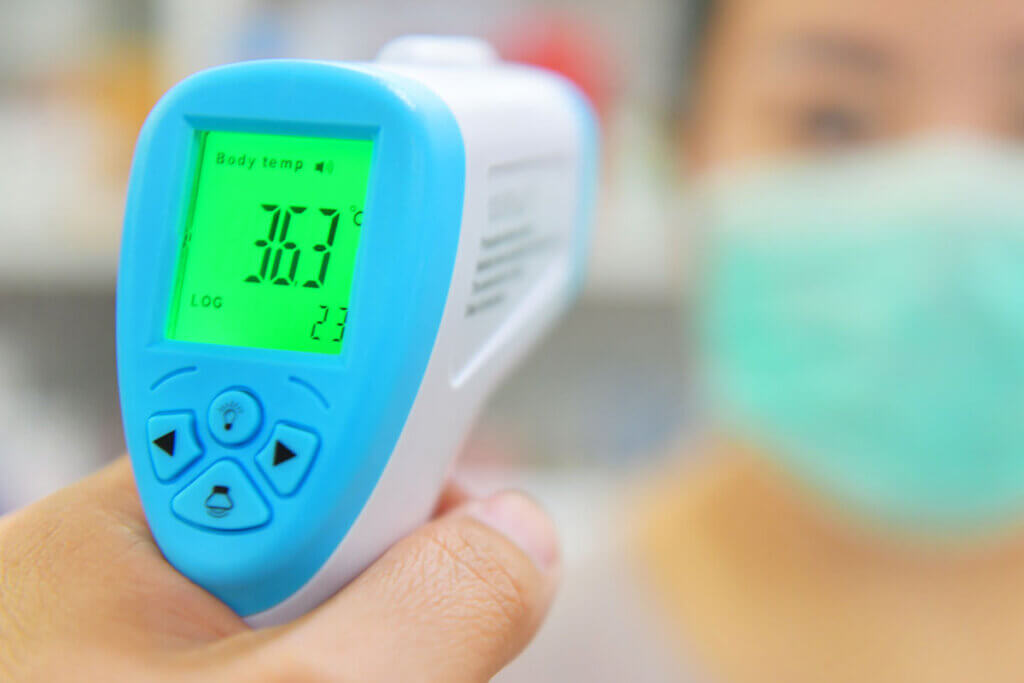
Memory function
Some digital thermometers can store the results of measurements over a longer period of time. This is particularly useful if you want to measure your body temperature frequently or compare the fluctuations. Most digital thermometers can save up to 10 measurements, higher-priced ones up to 90. A memory function always shows the last measured value, which can thus be checked at any time. When the memory is full, the oldest value is replaced by the newest one.
Connectivity
Clinical thermometers can also send data to a smartphone via the wireless Bluetooth interface. This works with the help of the respective manufacturer’s app. This function ensures that the measurement is monitored in real time; the progress is constantly transmitted to the phone. As with all Bluetooth applications, the distance between the device and the mobile phone must not exceed 10m. Manufacturers advertise this function with clearly evaluated data that is displayed as graphs in the respective app.
Extra functions
Many modern clinical thermometers offer a number of additional functions. Some of them make measuring more comfortable and safe. A flexible measuring tip, for example, can help to position the metal sensor in the right place. If it is also preheated, the measurement is not only more practical to use, but also more comfortable. Some thermometers also have a built-in system that signals when the tip is in the right place.

Some battery-operated devices are also equipped with an automatic switch-off function that kicks in when the clinical thermometer is not in use or a power-saving function that also switches it off by itself. If you want to use the thermometer for the whole family, you may also be interested in Braun’s Age Precision technology. This offers the possibility of determining age-dependent fever threshold values.
While medical thermometers are used for measuring body temperature, there are also products that additionally determine the room temperature when the device switches from body mode to room mode. The different modes make the thermometer an all-rounder in the household.
What types of measurement are there?
The best way to find out how to measure body temperature correctly is to read the instructions of your thermometer. Some devices are more complicated to use than others. You can either take the temperature once or observe the temperature curve and take several readings a day to document the progress. Especially for children and elderly people, it is advisable to keep an eye on the body temperature and consult a doctor when in doubt. The body temperature can be measured in different parts of the body. This depends on the type of thermometer and on the methods used to measure it.
Body temperature
Body temperature refers to the temperature of the vital organs. In a healthy person, it is between 36.5 and 37.4°C. The measurement is possible at different parts of the body. Rectal measurements provide the most accurate results because the clinical thermometer is close to the organs. Ear thermometers are also very accurate because the heat radiation from the eardrum provides reliable readings.
Rectal measurement
Inserting the thermometer into the anus promises particularly accurate readings, but is unpleasant for most users. This method is mainly used for babies and infants because it is very reliable. However, it is not very popular with children. As a result, the child may resist and prevent the measurement. A flexible measuring tip and some baby cream can help. When the rectal measurement is finished, it is important to clean the thermometer thoroughly.
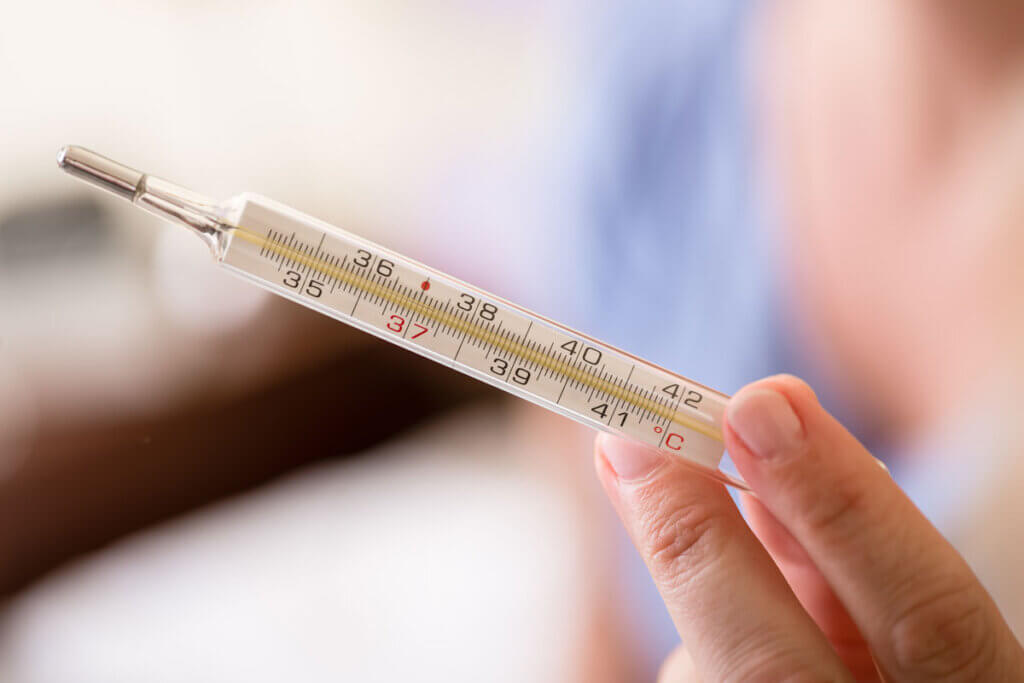
Oral measurement
Some patients prefer a sublingual measurement. This involves placing the metal tip under the tongue at the very back of the mouth. It is important that the sensor of the thermometer does not slip out from under the tongue, but that it remains in the heat pocket, otherwise the measurement will not be correct. This method is recommended from the age of four, but also depends on how long the child can hold still.

Surface temperature
Measurements on the forehead, under the armpit, or in the mouth — i.e. on the surface of the skin — are more comfortable to use, but can be influenced by the environment and lead to inaccurate results.
Axillary measurement
There is also the option of placing the thermometer under the armpit and taking the temperature there. However, the result may be inaccurate. The measurement takes a long time compared to other methods, which increases the susceptibility to error. In addition, the thermometer only measures the surface temperature of the skin, not the body temperature. Axillary measurement is therefore not optimal.
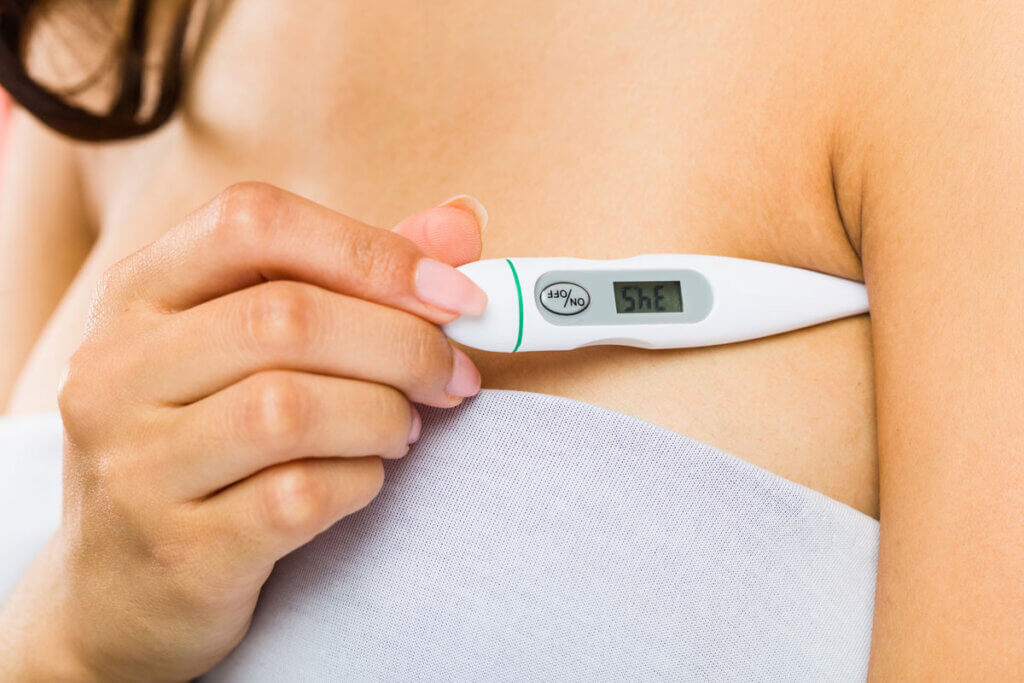
Measurement on the forehead
Digital infrared thermometers measure the temperature on the forehead. This happens within a few seconds and is therefore one of the fastest and least unpleasant methods. Some forehead thermometers even work contact-free and are therefore very hygienic. Forehead measurement is particularly suitable for small children. It is also useful for babies if the measurement is to be taken at night. A supplementary rectal measurement provides more certainty regarding the result.
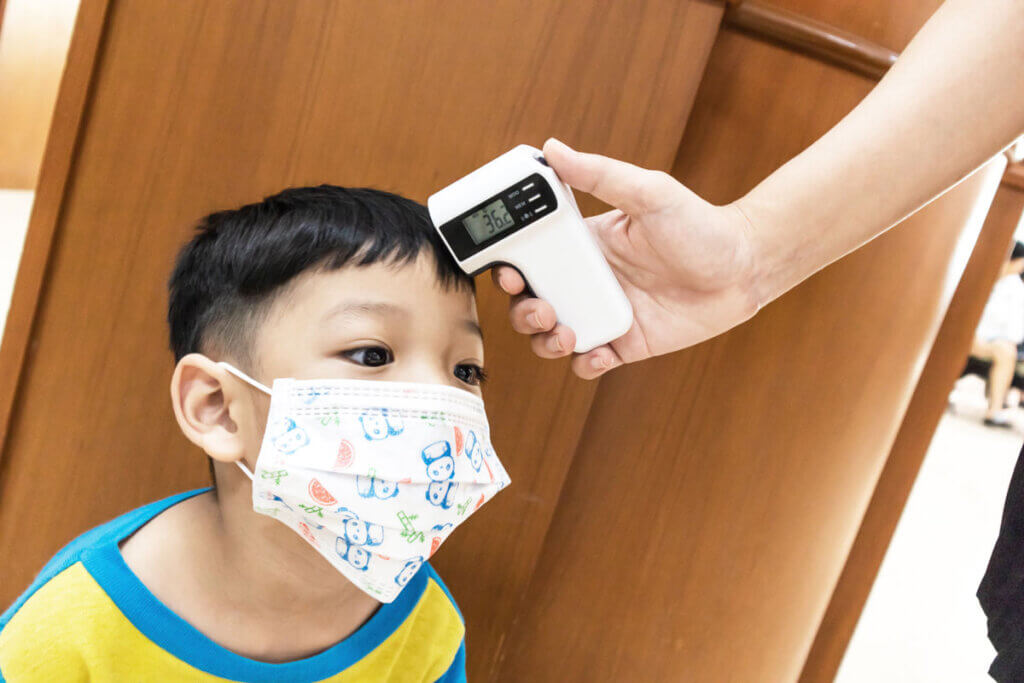
Measurement in the ears
Some infrared thermometers can measure both forehead and ear. When measuring in the ear, make sure that the tip is positioned correctly. Otherwise, the ear thermometer may give a distorted result. This requires a little practice at first. Nevertheless, the method is also suitable for babies and small children. It convinces above all with its precision, because the heat radiation of the eardrum is measured. A thermometer with a preheated measuring tip can make the procedure more comfortable.
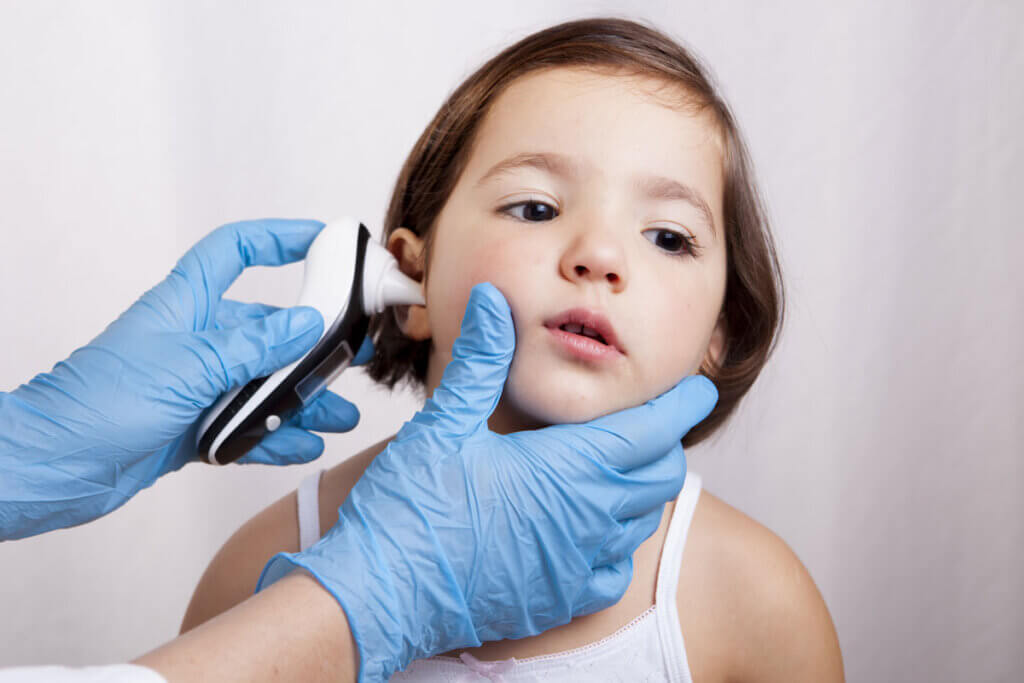
Cleaning a medical thermometer
Of course, medical thermometers must be cleaned regularly — especially after use. Hygiene is not only particularly important for the sick, but also for the healthy, in order to keep the risk of infection as low as possible. A contactless medical thermometer is less affected by this, as it only measures the surface temperature. However, users should take special care to clean and disinfect the thermometer when taking a rectal, ear, or sublingual reading. It is best to clean it after each measurement, but at least once a day when in regular use. If users also use the thermometer for other patients, i.e. for more than one person in the household, it is even more critical to maintain hygiene.
Some manufacturers, including Braun, offer disposable protective caps that are used for each measurement. This eliminates the need to clean the tip. For other thermometers, it is recommended to use alcohol swabs or wipes with at least 70% alcohol. Other cleaning agents are not recommended because they can attack the material of the thermometer. The case should also be wiped regularly. Gentle detergents with cold water are suitable for this purpose. Always read the instructions for use of the respective thermometer on the subject of hygiene.
Image 1: © lukaspuchrik / stock.adobe.com | Image 2: © zilvergolf / stock.adobe.com | Image 3: © moodboard / stock.adobe.com | Image 4: © I Viewfinder / stock.adobe.com | Image 5: © elenabsl / stock.adobe.com | Image 6: © KZenon / stock.adobe.com | Image 7: © Racle Fotodesign / stock.adobe.com | Image 8: © Asier / stock.adobe.com | Image 9: © lllonajalll / stock.adobe.com | Image 10: © WH_Pics / stock.adobe.com

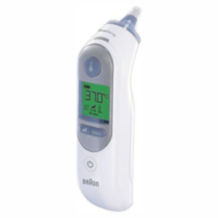
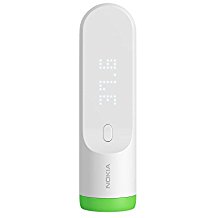
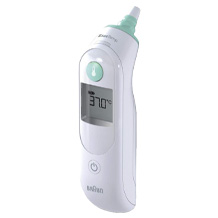




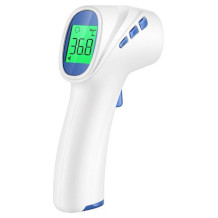


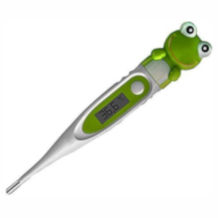



 63,919 reviews
63,919 reviews






